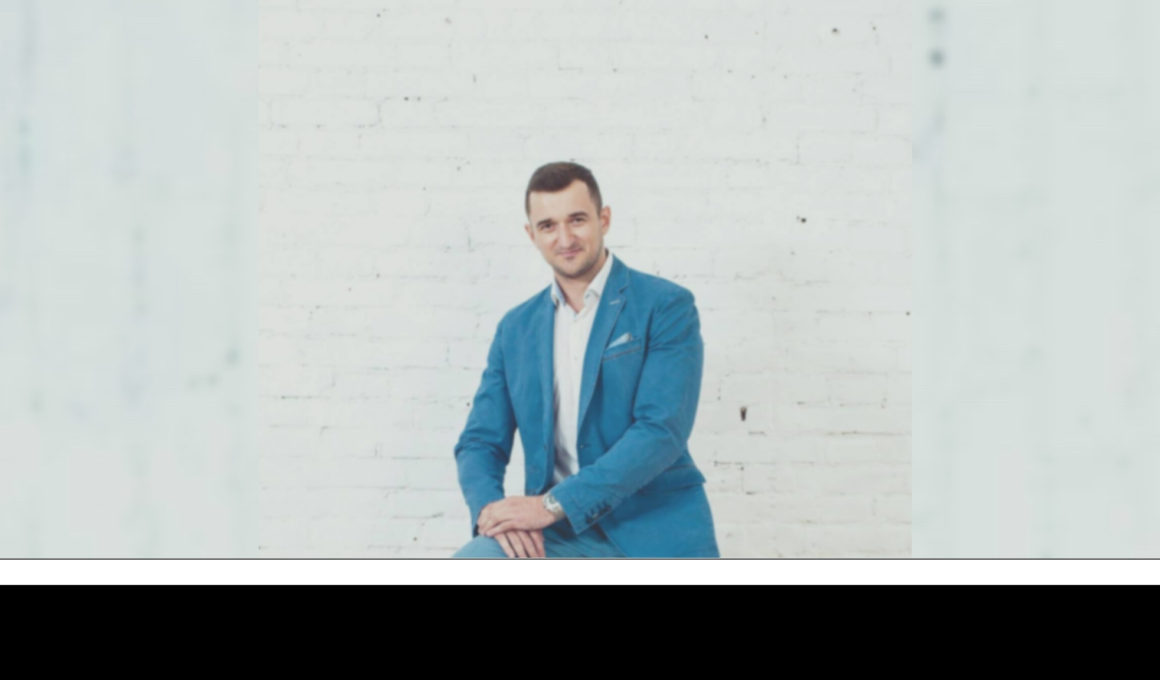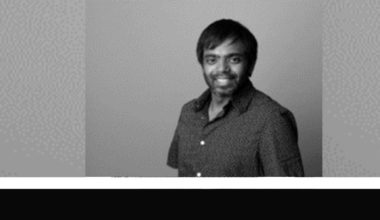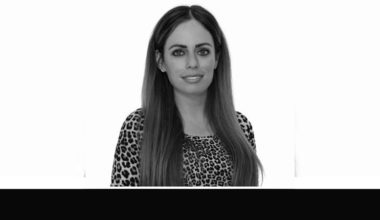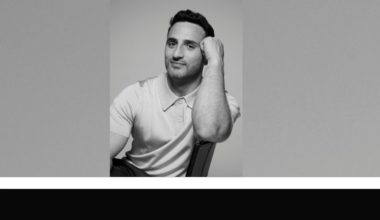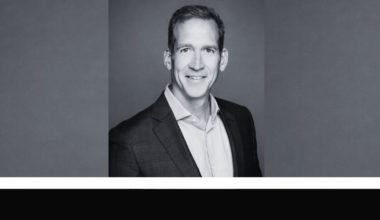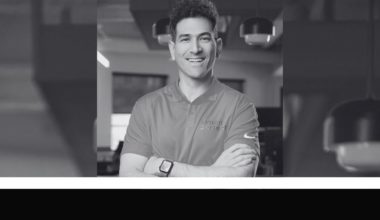Ilya Popov, CEO at ComeBack Mobility, raised a $500k Pre-seed round all by himself from scratch with only an idea during lockdown 2020. Ilya invented a unique health tech that helps doctors rehabilitate patients remotely. It’s a medical device, which makes it possible to calculate the load of weight on the injured leg, that was previously impossible and was measured randomly.
Ilya Popov is one of MBI leaders, an entrepreneur from birth. His unique quality is to turn every experience into a startup. For example, being a professional fighter he launched his previous startup for sports’ teams. Now it’s an international business operating in 36 countries.
What is ComeBack Mobility all about?
ComeBack Mobility is a MedTech company that created smart crutch tips – an innovative orthopedic device that works together with an application that both a patient a doctor have. By offering real-time insight on the patient’s leg load and timely feedback from the doctor, smart tips for crutches aim to solve the difficult task of partial weight distribution after lower limb traumas.
With 65.8 M patients with lower limb injuries per year, there is still no modern way to control the rehabilitation properly. Today patients rely only on feelings when the doctor says to load the injured leg with 30% of the patient weight. The availability of detailed information about weight allows the healthcare professionals to provide better guidance and make the recovery faster avoiding complications.
ComeBack Mobility startup helps both doctors and patients: Patients have crutch tips that work together with a smartphone app, where patients have rehabilitation programs uploaded by doctors. The app helps patients to be regular with exercises and keep the load on the injured leg under the set program while consistently receiving doctor’s recommendations.
Doctor has a web app that contains data about all his patients and makes it possible to remotely monitor how the patient loads the injured leg, address the patient’s concerns, and adapt the program to his or her needs.
At ComeBack Mobility, we have proven that our product can bring the rehabilitation process up to a whole new level.
Tell us a little bit about your background and how you started your business?
After the successful exit from my previous startup, I decided to go wild. I took a one-way ticket to Thailand and dived into professional kickboxing while being there. In one of the fights I broke my arm; rehabilitation took way longer than I expected. The reason was – I didn’t get the doctor’s advice to the full and was making some mistakes in my rehabilitation exercises. So I came up with the idea of the rehabilitation device, which might potentially simplify the communication between the doctor and the patient along with the tracking of the entire recovering process.
But the idea is worth nothing without the proper proof – so I set up several meetings with the orthopedic surgeons. I was surprised by the feedback they gave me! Most of them confirmed that there is a communication issue, but in lower limbs’ rehabilitation. It turned out, that if whatever happens, the patient can remain for some time without loading his hand, which would be complex without putting any pressure on the leg. I did preliminary market research and noticed that some startups were measuring the load on the leg directly, so it made their products too personal and expensive.
I gathered the team of enthusiasts, and we came up with an innovative solution: it is possible to measure the load on the injured leg by tracking the load on the crutches! Knowing the patient’s weight, we can calculate the pressure for every step. So we started prototyping immediately.
How has the pandemic affected you or your new business?
I raised a pre-seed round just two weeks before the lockdown started. Thinking that quarantine restrictions may last longer than any of us would expect at first, we gave up on the office and rented a house in the forest with a fast internet connection and beautiful nature around. It has been a fascinating experience! The whole team together was isolated from society and completely concentrated on development.
Living in isolation was the best thing to do, both in terms of Covid safety and team building. We lived together like in the Silicon Valley TV series, exchanging ideas vigorously and being in a constant brainstorm.
Other significant advantages of the pandemic were:
High-level specialists became available due to market drop
We attracted the top-level specialists with lower salary costs due to the market drop. Because of the lockdown, a large number of IT specialists were left without work. It was easier to recruit, and we were able to agree on cooperation on much more favorable financial terms.
Telemedicine out of sudden became not only a tool but a must for most patients.
Hospitals were overcrowded and telemedicine became the only way to see a doctor. Our solution brings the doctor and patient together on one platform, storing the whole patient’s story in one place. The doctor is always there for a patient, and we made it possible to monitor the patient from the beginning till the end by one doctor instead of any available doctor in a clinic.
It was possible to participate in several conferences at once: 100% online, no travel costs
We were able to validate the need for our product among doctors from all over the world: Asian, European, and American countries. Having contacted doctors at specialized conferences, we learned how the process of patient’s rehabilitation is monitored by a doctor in different countries. We found that the load on the injured leg during rehabilitation is carried out randomly in all countries.
What was the biggest problem you encountered launching your project, and how did you overcome it?
The biggest problem in our startup is that as with any hardware project, the preliminary test of the idea will require the expenses on the initial batch production. In our case, it meant the closure of a round of investments of about $500k.
We were able to raise this round by completing the series of in-depth doctors’ interviews from around the world (in particular, Japan, the USA, Germany, Russia, and Ukraine), confirming both the nature of the problem and the underlying pain. When we saw that 74% of doctors from all over the world confirmed the problem with a detailed answer to the set question, the confidence in the idea increased.
What were the top mistakes you made starting your business, and what did you learn from it?
Problem – We started giving the product to use for free, only because it was a clinical trial
Insight – It turned out that all customers are willing to pay.
Explanation – The best proof that your product is needed is customer money. If the product does not work well and is tacky, but it solves the problem, go to the market and take money from customers. Do not wait. The conversion improvement process is another task that has nothing to do with validation.
Problem – We delayed solutions and lost a lot of opportunities
Insight – it’s better to make 40 decisions from which 30 will be correct than thinking long about 5 of which 4 will be correct.
Explanation – A startup CEO is a leader who makes a lot of decisions quickly every day. The winners are not the most deliberate ones, but the fastest. You do not need to do Excel calculations and presentations to present those opportunities, you need to make a decision quickly.
Problem – You should write all your ideas in a business book
Insight – If the idea is reasonable – immediately interpret it into tasks with deadlines
Explanation – Discussing ideas in meetings does not benefit any business or clients. Only fast hypothesis validation helps us move forward. We used to write ideas and hypotheses in a long list of backlogs. Now we have added deadlines. If you feel that current tasks are of higher priority and the implementation of a new idea is delayed for more than a month, then the idea is shitty. You always want to test an awesome idea right away.
What is one thing you do every day that helps you grow as an entrepreneur?
Every day I spend one hour checking things that worked out and identifying what needs to be improved. Daily in the morning, I have a meeting with my team. At this meeting, we talk about the results of work done yesterday and share our plans for today.
The main aim of such meetings is to analyze and define the reasons why some tasks were not completed, or their results did not meet the expectations of the management. In some cases, it appears that the task was incorrectly formulated, the competencies of employees or the required deadline were overestimated.
After the year of the regular crew meetings, we’ve learned how to plan and determine the capabilities of our team at a significantly lower cost.
The ability to establish communication within the team and motivate each of its members helps me meet investor expectations and boosts my credibility as a manager.
What was your first business idea, and how did you implement it?
As a student in Cyprus, where I was receiving my MBI education, I got acquainted with the local business and discovered that the cost of producing plastic cards even in a thousand copies was 1 euro + a piece, while in Ukraine the price was 0.05 euro. Despite this difference, customs and shipping would eat up all the profits.
I recruited one student who took plastic cards produced in Ukraine and came to the airport before the Ukraine-Cyprus flight asking passengers to carry these cards in exchange for meeting them at the Cyprus airport and transferring them wherever they needed.
And now let’s count: out of 3000 pieces the cost was:
- Production cost – 150 euros,
- Gasoline – 40 euros,
- Commission paid to a hired student – 50 euros.
= 240 euros for 3000 plastic cards -> 0.08 euros per card
Impressive numbers, aren’t they?
What are you learning now? Why is that important?
I continue to study Product Management. I enjoy it, and I think that this knowledge is a must for a company founder.
The lack of deep understanding of the product development stages, the inability to identify product KPIs or setting up the north star metric will most likely lead you in the wrong place. So you will create a product for the sake of development, but fail to achieve business goals.
I recommend watching t hese courses that helped me avoid many mistakes:
What is the one thing you wish you knew before starting your business?
I wish I knew what the main stakeholders really thought of my product. I mean knowing their values, difficulties, expectations, goals they pursue, etc.
We spent 3 months on exploratory interviews and surveys of our potential users, customers, and partners before launching, and today we continue to pay a lot of attention to studying their working and living environment to ensure that the value of the product is as definite as possible.
What has been your most effective marketing strategy to grow your business?
Perhaps, splitting the value proposition into very narrow segments and target audiences, based on their goals and objectives. Despite the fact that this approach is the most labor-intensive, in my previous project it justified the investment. Let’s give an example. As part of the last project, we helped sports teams organize a trip to sports training camps.
At first, we were selling offers created according to kinds of sports, then – by price segments, and finally – by location. It appeared that the most effective way to sell sports trips was to create offers for the international championships where different sports teams participate. So, sports teams traveled to training camp to prepare for the major event in the climate and attitude conditions – the same as the ones they will later experience during competition peak loads.
It was necessary to constantly form new offers since events were always held in different countries of the world and in different climatic conditions. But it brought results since we positioned our product as not only a simple order of a sports facility, hotel or transfer service but as holding a sports camp, which would significantly increase the chances of the team to win!
What’s your best piece of advice for young and aspiring entrepreneurs?
Take risks, win, make mistakes and thoroughly analyze cases and outcomes: look at the situation from different points of view and try to understand, why the goal was achieved extremely easily or was not achieved at all, what conclusions can be drawn from this experience, how to act in a similar situation next time so that the result meets expectations.
What is your favorite quote?
Entrepreneurs are people who do more than it seemed possible … with fewer resources than it seemed possible
Along with the common social media tools available, what are the top 3 most useful tools or resources you’re currently using to grow your business?
- Mentoring sessions from accelerators and investors are the most powerful means of validating and testing the strength of your plans. People with more rich and relevant experience make you look at your idea from a different perspective, reveal possible gaps, and therefore improve planning.
- Udemy and other online course platforms. All the employees in my team obtain continuous training. The main rule is that new knowledge should be used in practice
- The media presence of the founders. We’ve just checked the Product Solution Fit, which means that the only thing remaining is to find the most profitable and quickly scalable business model. Accordingly, from now on, the names of the founders should be associated in the press with our brand – ComeBack Mobility. It’s a long-term investment that snowballs and won’t start bearing fruit soon, but getting started on time is very important.
In what way running the company is different from what you thought it would be?
Once upon a time I naively believed that I could combine operational and managerial tasks. I also had the misconception that trying to enter several markets at the same time is a good idea. Unfortunately, these things cannot be paralleled until you have a well-functioning system, a valid business model, and experienced executives.
How have you personally overcome fear?
For me, overcoming fear is a rare and sweet state, as there are fewer and fewer moments in this life that make my heart beat faster. The way to overcome any fear whether it’s a boxing ring, closing an important deal for my company, or extreme 126 height bungee jumping is similar: take into account all the risks, focus on a goal with a positive outcome and, just like during the jump, don’t look down, direct your gaze above the horizon, then take a step forward and experience adrenaline!
How can readers get in touch with you?
I would be happy if readers contacted me via Facebook or LinkedIn
Random Interview: Mar Pages – Grow a Solo Female Travel Community When Borders are Closed

